
by Brooke Chilvers
You have to understand that I lived in Charleston—Isle of Palms, to be exact—in 1976. I worked a $2.30 an hour job at the still-existent Southeastern Galleries, and earned five times as much working the happy-hour shift at the long-gone White Horse Inn. Gas cost 59 cents a gallon, and I listened to Jackson Browne as I navigated my wounded-warrior boyfriend’s pickup across that scary outside lane of the windy old Cooper River Bridge.
Please note that our recent splendid dinner at the perfectly attuned Establishment on Broad Street cost more than my combined take-home pay back when, it seems, fine dining was limited to the beyond-our-means Poogan’s Porch.
Mount Pleasant boasted a Longhorn Steakhouse, a single supermarket, a couple of shrimp shacks on Shem Creek, and the Lorelei. I wonder what old Travis would make of today’s Whole Foods, Publix, two Harris Teeters, and more than 60 eating establishments.
Somehow, I still managed to study ornithology at The Citadel, with its hardcore birding in swampy Francis Marion Forest. Dolphins kept me company while I chased sanderlings and ruddy turnstones down the beach in front of the $100-a-month cottage.
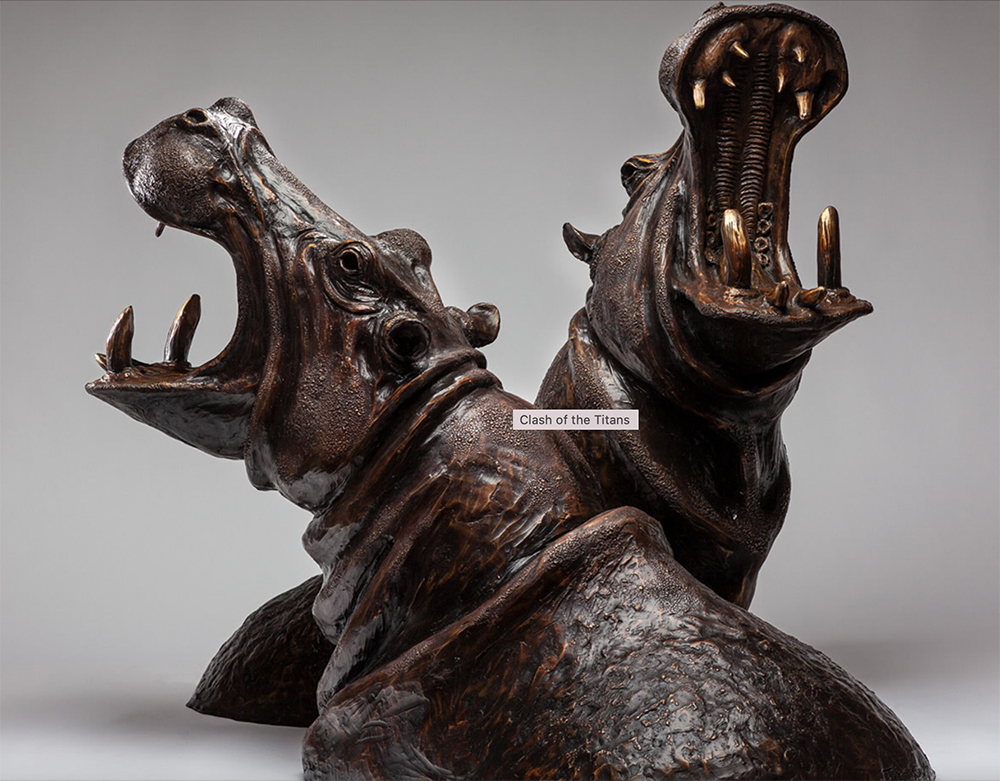
Of course, I returned many times to Charleston over the years. Who can resist Charleston? But never for the Southeastern Wildlife Exposition (SEWE), where one and a half days was at least 50 per cent too little time, even if you skip historic tours and window shopping.
Above all, SEWE gave me the chance to visit with artists I’ve written about in the past, and to hug the ones I’ve known forever, including professional hunter turned bronze animalier sculptor John Tolmay. John grew up roaming his father’s ranch in Southern Rhodesia’s Midlands where kudu, sable antelope, and tsessebe roamed. During one safari convention years ago, we sat in his “booth”—an enormous U.S. Army 6×6—high above the convention floor, and talked, of all things, about art.
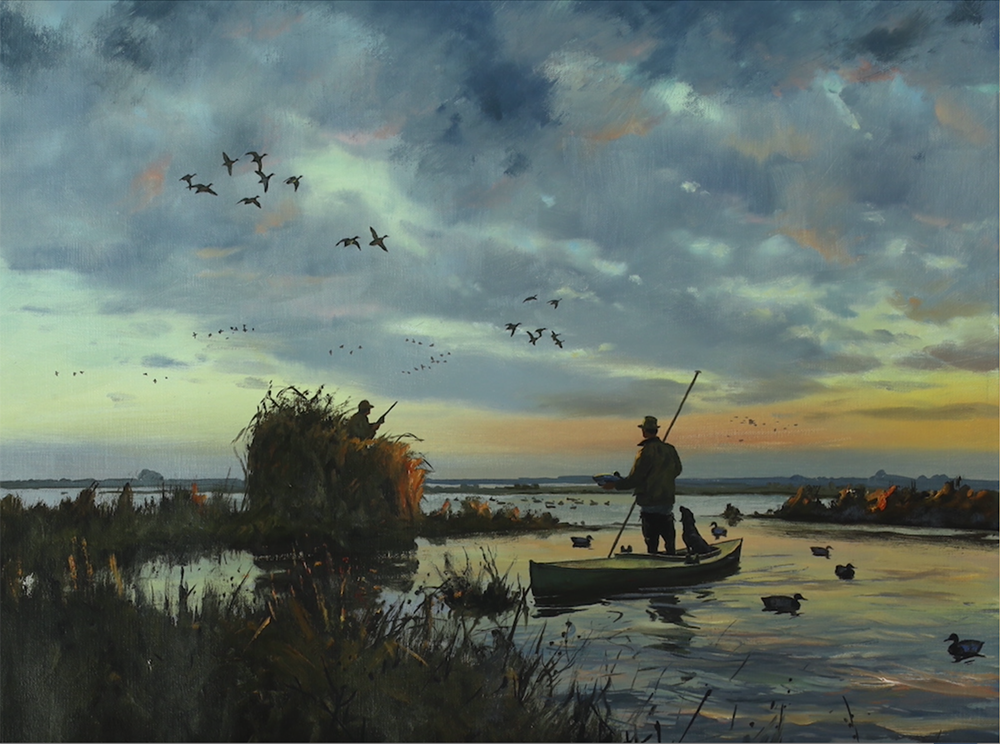
Even at age eighty-plus, John still returns faithfully to the Zimbabwe bush in preparation of new sculptures, such as the 70-pound Clash of the Titans—two battling male hippos—he displayed at SEWE.
Already in 2009 (Issue 34.4), I wrote, John Tolmay, Exchanging his big-game rifle for a clump of clay.
My first contact with C.D. Clarke (b. 1959) was with his watercolor, Maple Tree Gobbler, in 2005’s Issue 30.2. And I loved Old Florida Road in 2009 (Issue 34.3). By 2011’s (Issue 36.6) Snow Quail, I was hooked. So we gladly accepted the hospitable invitation from the charmingly old-fashioned all-around sportsman and artist, and his wife Tracey, to their lovely rural home and studio in New Jersey. There, C.D. introduced us to our first Big Green Egg, and the art of his perfectly grilled wild duck.
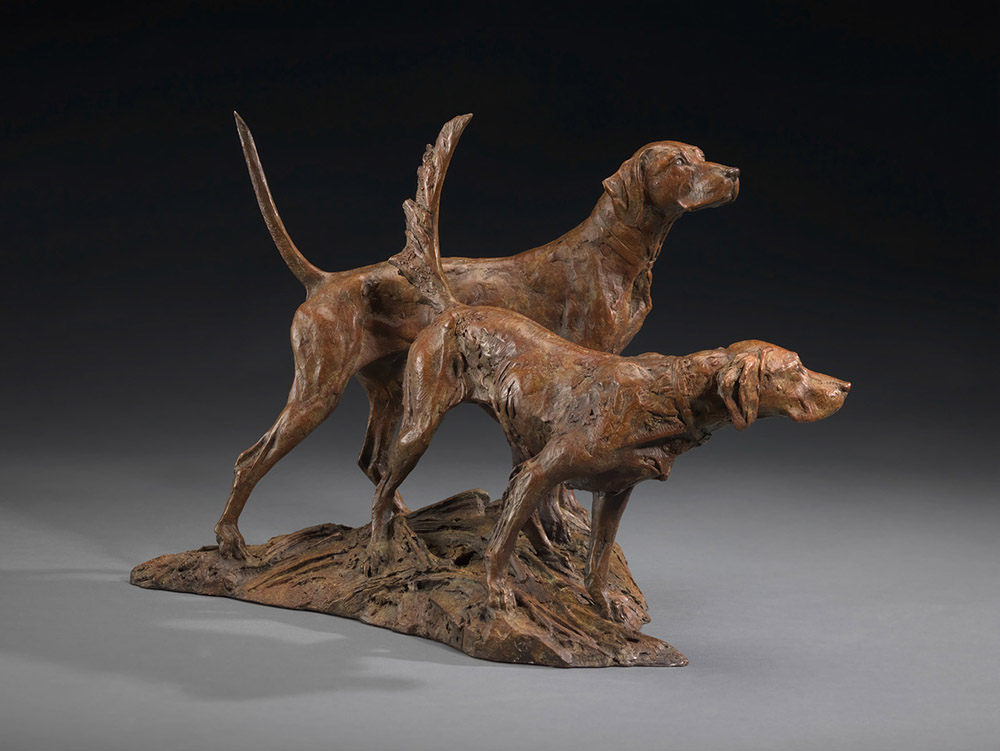
It’s no surprise C.D. nabbed his first fish when barely out of diapers. By 12, he’d become fascinated with fly fishing and taught himself the rudiments from books. Today, C.D. lives the sporting life he read about as a kid in Field & Stream, seeing it through the eyes of Lynn Bogue Hunt, Aiden Lassell Ripley, and Ogden Pleissner. He discovered Chet Reneson in the pages of Gray’s Sporting Journal; he’s been a subscriber since age 17. His book, The Sporting Art of C.D. Clarke, was published by Stackpole Books in 2023.
In 2014 (Issue 39.2), I wrote, C.D. Clarke, The nexus between field sport and art.
Brooke Chilvers talks with C.D.Clarke
Readers of GSJ have been enjoying New Orleans native Brett James Smith’s work over many years, from After Lunch (Issue 30.1, 2005) to First Flight (Issue 48.6, 2023). With their narrative punch, strong composition, and conspicuous colors, Brett (b. 1958) has a foot firmly planted in the outdoor art of yesteryear.
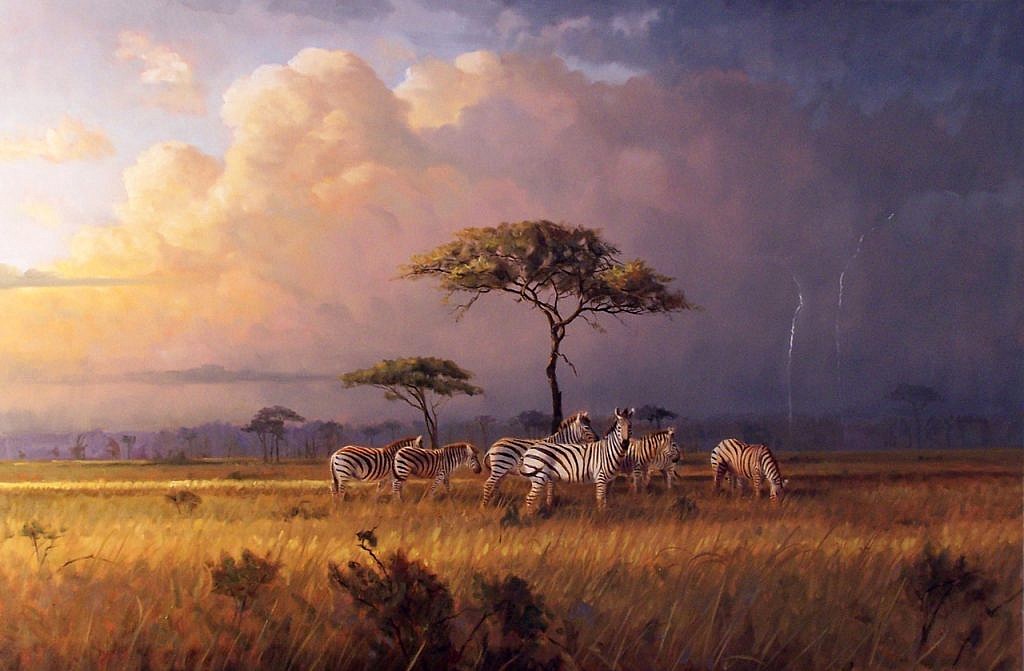
In fact, Smith traces his roots back to Philip R. Goodwin, Howard Pyle, and Bob Peak, whose unforgettable movie posters for West Side Story and My Fair Lady inform Smith’s frank touch. Whatever the sporting activity, Brett is fearless in creating mood and shaping figures with saturated color.
In 2019 (Issue 44.4), I wrote Brett James Smith, A remembrance of things past. Brett’s wife, Cindy, is also charming, and I hope we all meet again.
Brooke Chilvers talks to Brett James Smith
Who can forget bronze sculptor Walter Matia (b. 1953)? Walter brought us to his home and studio in the gorgeous countryside around Sugarloaf Mountain, Maryland, as well as to his “downtown” workshop, introducing us to his favorite BBQ sandwiches and ice cream along the way.
At age 10, Walter set out to learn the names of every animal in the world. Soon he’d compiled files on his favorite outdoor artists, including Louis Agassiz Fuertes, Lynn Bogue Hunt, Bob Kuhn, and Charles Livingston Bull.
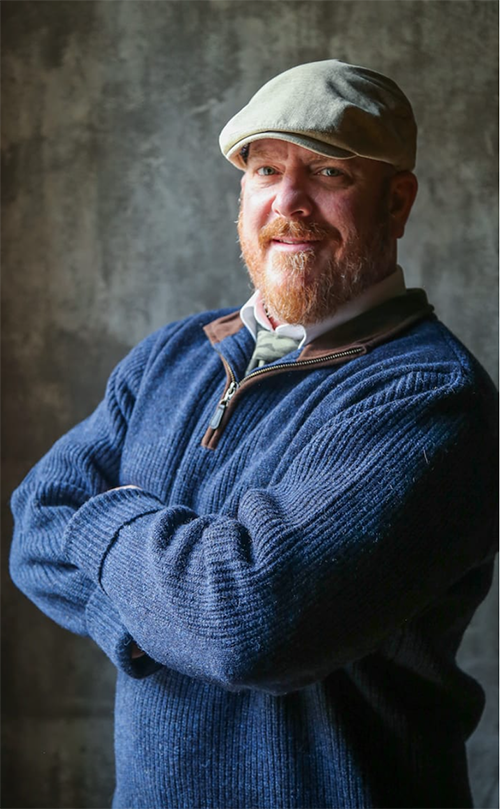
His 2021 exhibition, Field Notes, at the National Sporting Library & Museum in Middleburg, Virginia, featured his large-scale works, including his signature wild turkey, blue-winged teal, great blue heron, and whooping cranes. A master of life-sized hunting dogs, A Point of Honor, is the result of great understanding and communication between artist and dog owner.
In 2021 (Issue 46.5), I wrote Walter Matia, The making of a sculptor of the sporting life.
South African-born artist Grant Hacking’s (b. 1964) childhood was filled with scouting wildlife with his artist parents in Kruger Park and the Great Zimbabwe ruins. Today, although African subjects still constitute about a third of his wildlife output, his home and studio are in New Hampshire ski country. Grant finds North American elk, bears, moose, and wolves, along with more abstract Maine coastal scenes and White Mountain landscapes, equally inspiring.
Brooke Chilvers talks with Grant Hacking
Although Grant taught himself to paint from studying the works of Robert Bateman, Guy Coheleach, John Seerey-Lester, and David Shepherd, he turns to “everyone and to no one” for inspiration. “Being influenced by other artists can make your life very hard. As I have grown in my art, I have learned to rely on my own work and skill.”
Grant was SEWE’s 2015 Featured Artist. I’ve lost count of how many Gray’s covers he’s done.
In 2022 (Issue 47.4), I wrote Grant Hacking, Born to paint nature.
My post-SEWE mind is spinning with artists whose work is starting to come across to me, including “featherfolio” artist, Chris Maynard, who visited us once in the Blue Ridge. A conservationist and naturalist, he uses turkey, parrot, and peacock feathers in his enchanting and intriguing shadow boxes. And I already have plans to return to the Lowcountry saltmarshes I loved so much with fly-fishing artist Paul Puckett.
Brooke Chilvers talks with Chris Maynard
Brooke Chilvers thanks The Establishment’s engaging master mixologist Ryan Wise, winner of the 2009 Absolute’s Best Bartender in Charleston Award, for the chance to imbibe his original Sweet Lil’ Nellie and Lowcountry Lilly cocktails, named after his lovely daughters.
